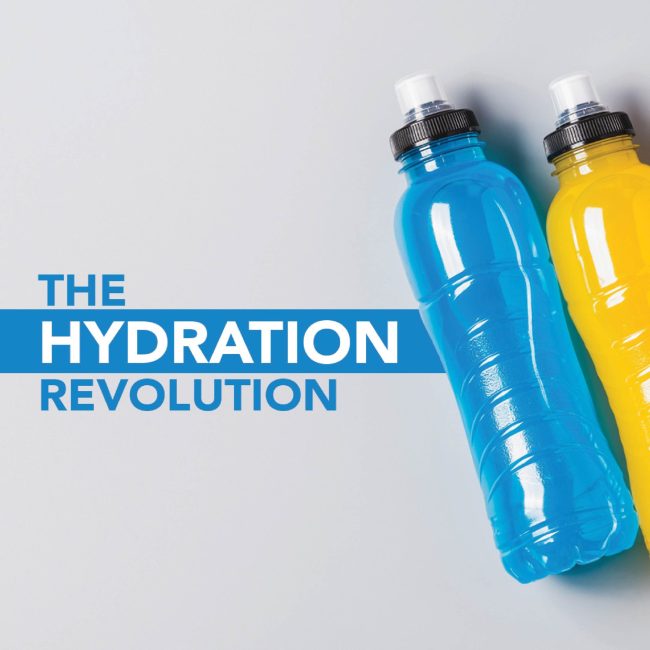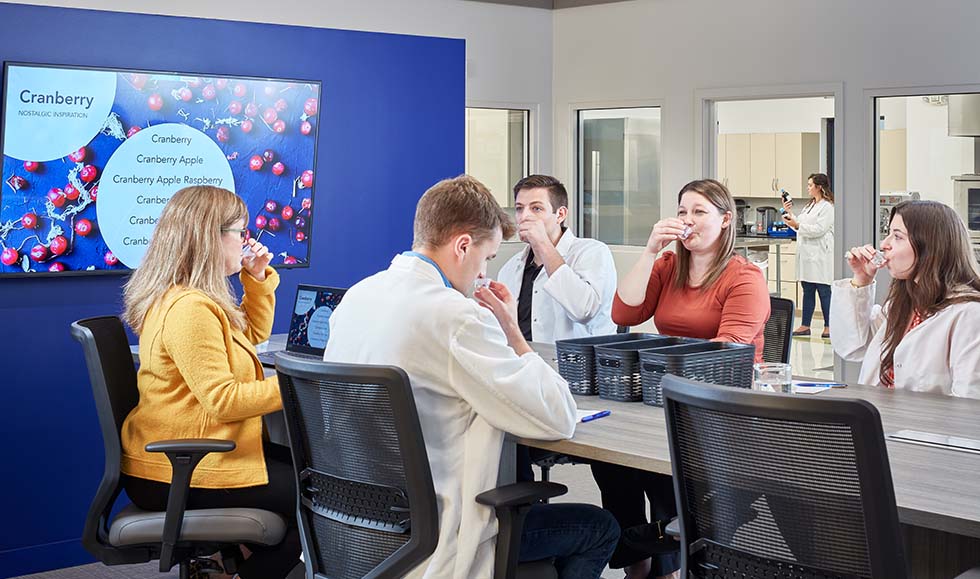The Hydration Revolution: An Evolution of Consumer Interest and Responding Innovation

Hydration is essential for every life form to survive, and while there are competing reports on how much water should be drunk for optimal health, consumers today are actively seeking more ways to quench their thirst.
In the 19th Century, hydropathy was a discipline promoted by alternative practitioners who claimed that water was a cure-all for what ailed humans, according to The Science of Hydration article from The Physiologist Magazine. Today, hydration is marketed much the same, promoting it as the key to everything from overall wellness to increased weight loss.
Hydration is not a new concept, but in the 1960s, Gatorade began marketing hydration as a problem that needed to be solved. Its product promised to be “the big thirst quencher for active people. Now available for thirsty kids, thirsty Moms, thirsty dads,” the ad read.
Today, the hydration market has evolved into something even greater. Water bottles have become a status symbol, a vital accessory to daily life; and the Stanley cup has become the crème de la crème. Stanley’s Quencher has seen a 275% year-over-year increase in sales and has experienced a 215% increase in its best-selling category, hydration, according to Retail Dive.
“They have a phenomenal pulse on the conversations on social media – what are people talking about?” Namrata Shah, a partner and global head of consumer and beauty at Kearney PERLab, said to Retail Dive about Stanley. “It’s the connectivity. It’s not just a product that they’re putting in the market. It’s about listening to the consumers, what really matters to them and actually working on that and bringing that offering to the market.”
The Consumer Thirst for Hydration
Why are consumers so interested in hydration today? Consumer interest in hydration has been intensified by a general increase in post-COVID wellness goals, attention to preventative self-care and trust in fortified food and drink.
In the US, 32% of adults feel more motivated to live a healthy lifestyle now than before COVID, which has led to a greater focus on self-care and overall wellness. In the UK, 58% of bottled water users would like to find out more about their hydration needs and 54% of French adults think drinking fortified water is a good way to boost your vitamin and mineral intake.
US consumers agree that staying hydrated is one of the most important health goals, but they also associate hydration with productivity. According to Mintel, 85% of US water users who are employed say staying hydrated keeps them productive at work, and 73% of UK adults say optimal hydration is important for mental performance.
Greater hydration awareness and exercise are driving people to drink more sports or performance drinks. Of the 32% of US sports/performance drink users who drank these drinks more often in 2022, 56% did so because they were “better at staying hydrated this year,” and 48% did so because of increased physical activity.
Functional Ingredients
The target consumer groups for functional hydration drinks are Gen Z and Millennials, with female Gen Zs being the biggest users of the beverages. According to a recent survey, younger consumers like the idea of adding supplements like electrolytes to water for extra hydration. However, most consumers of all ages don’t believe electrolytes alone justify a higher price, but believe the “right balance” of electrolytes indicates quality in sports and performance drinks.
To absorb electrolytes, a small amount of carbohydrates like sugar in sports drinks activate receptors in the small intestine. Nuun Sport has one gram of sugar per liter, for example. Of the US adults who use sports/performance drinks or mixes, 44% say sugar is necessary for sports performance. That number rises to 85% among those who exercise regularly and consider themselves athletes.
In addition to sugar, a small amount of protein content can enhance fluid uptake in the gut, according to Mintel. For example, Gatorade Zero with Protein features 10 grams of whey protein and 230 milligrams of sodium. Upbeat offers “hydrating protein with all nine essential amino acids.”
Hydration Flavor Innovation
When you think of hydration, what flavors come to mind? Citrus, berries and fruity flavors were probably some of your top choices, which is no surprise as nearly one-third of powdered hydration drinks carry citrus flavors. Citrus, summer fruits and berries are all common flavors in the RTD hydration market.
Are you looking for flavors that will help your product stand out in a crowded market? In our Hydration Revolution report, we take a deep dive into trending flavors, which ones are up-and-coming, flavor blends to consider and which flavors are recording high growth momentum for your innovation needs.
Contact us to schedule your hydration innovation session.
insights

